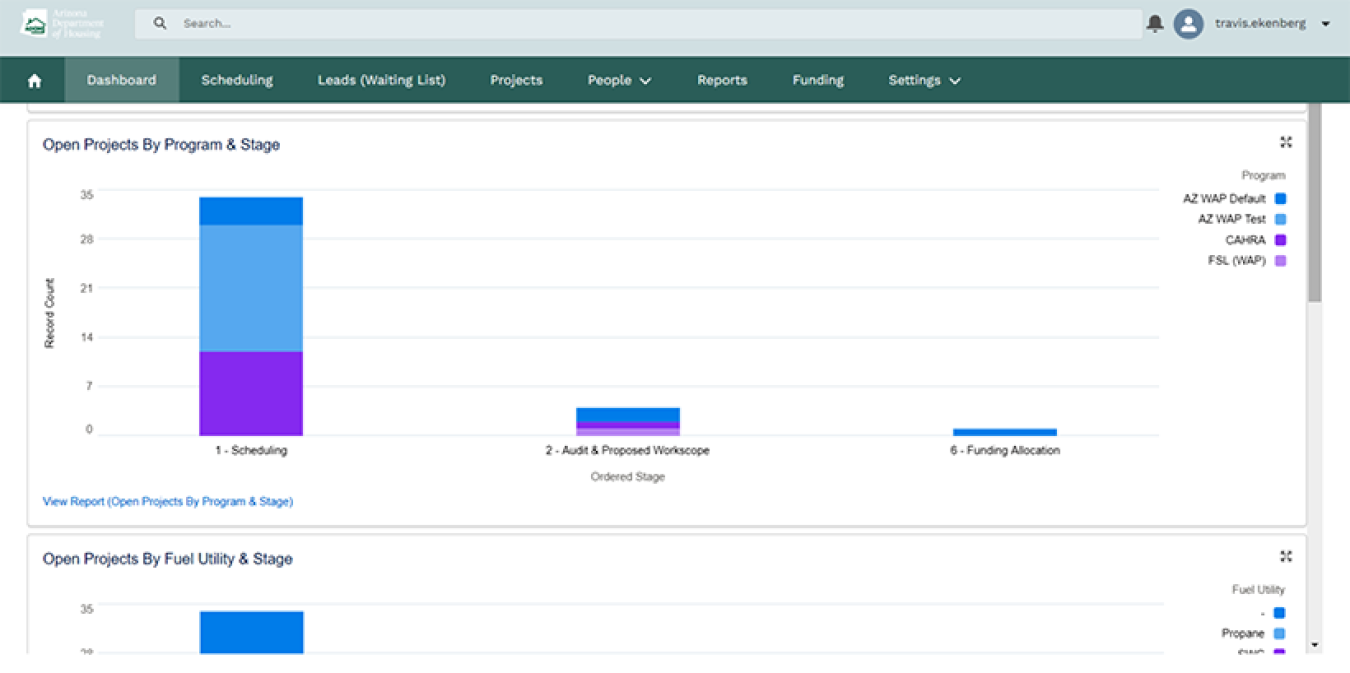In Arizona, the state’s WAP Grantee has developed a project management software program that will simplify and streamline data management, energy audit, inspection, and reporting processes for weatherization staff across the state.
Weatherization Assistance Program
August 5, 2024
About the Project
In Arizona, the state’s Weatherization Assistance Program (WAP) Grantee used multiple funding sources—including Bipartisan Infrastructure Law funds—to develop a project management software program that will simplify and streamline data management, energy audit, inspection, and reporting processes for weatherization staff across the state.
Challenge
The Arizona Department of Housing’s data management system for WAP was old and inefficient. They also recognized that staff at agencies across the state were struggling with the amount of time they spent on administrative processes, especially related to braiding and blending different funding streams.
Solution
The Arizona Department of Housing contracted a company to develop—over the course of a year—a customized software tool that would digitize, automate, and better connect the different steps and people involved in the process of weatherizing homes. The department is supporting this project with funds from the U.S. Department of Energy (DOE), Bipartisan Infrastructure Law, Low Income Home Energy Assistance Program, and multiple utilities, including Arizona Public Service, the Salt River Project, Southwest Gas, Tucson Electric Power, and Unisource Gas and Electric.
“We have a great partnership with all of these utilities,” said Travis Ekenberg, weatherization program manager for the Arizona Department of Housing. “They are all excited about the data and information we will be collecting and tracking and how it has already streamlined Arizona WAP processes.”
The software has three main components. One component serves as the agency’s database and basic project management and tracking platform. It also makes all client forms digital, so that they can be signed in the field as needed. The second component is the energy modeling tool, which Arizona worked to get approval on from DOE. This tool allows auditors to input all house information and includes room for photos and notes. It then uses modeling to calculate the Savings-to-Investment Ratio and ASHRAE standards and develop a scope of work. The third component allows Quality Control Inspectors to input all their inspection data and reporting and send a completed home file to the state for desk monitoring. As each step along the way is completed, the software automatically notifies the next person of what is needed for them, helping to ensure that steps don’t get missed and projects are not stalled.
In Arizona, Subgrantees use multiple funding sources outside of DOE to weatherize homes. Therefore, one aspect of the new tool that is especially valuable is its use of algorithms to automatically identify the most appropriate source of funds to use for certain measures, given different funding restrictions and allowable measures. It also works to help ensure different funding buckets are being spent down in a timeline fashion, with a dashboard function to help program administrators track and manage projects and funding streams throughout the year.
Positive Impact
Planning for the new software began in November 2022, with training and rollout for Subgrantees starting in December 2023. Ekenberg noted that the built-in quality assurance systems in the software have been especially helpful so far with ensuring that program requirements are met.
What we foresee, and what is the ultimate goal of this, is the ability to assist more eligible households in need, reduce their energy burdens, create healthy and safe living conditions, and reduce energy consumption, while ensuring comfort and sustainability.
Partners
- Arizona Department of Housing
- OptiMiser
This story was developed using content shared by the Arizona Department of Housing’s Weatherization Program staff. You can learn more about the agency here.

